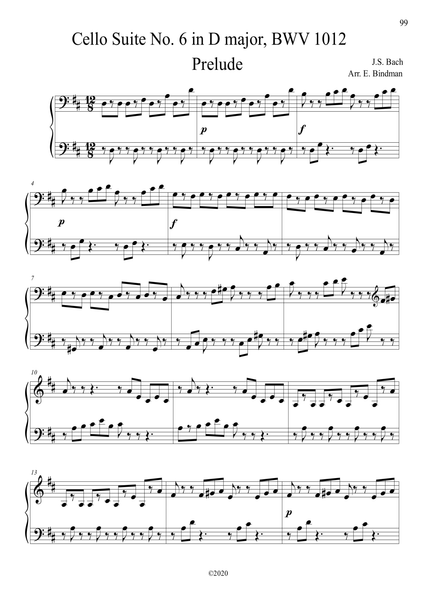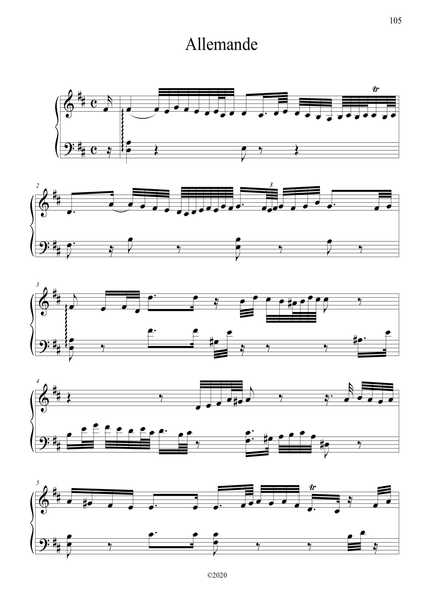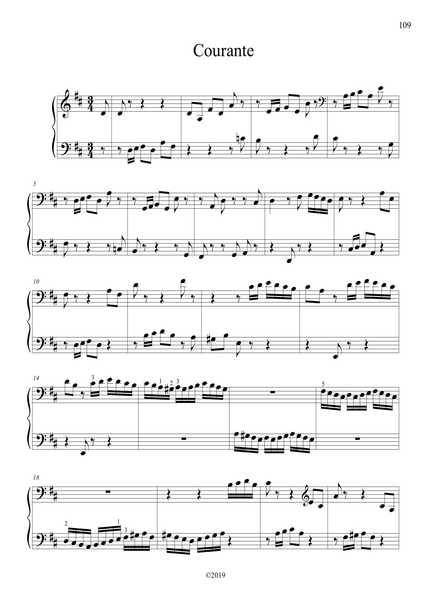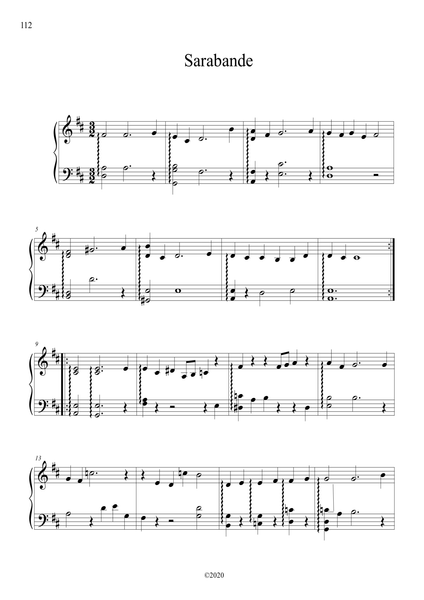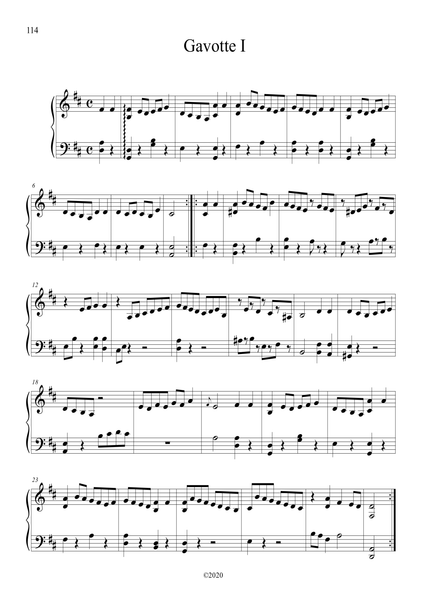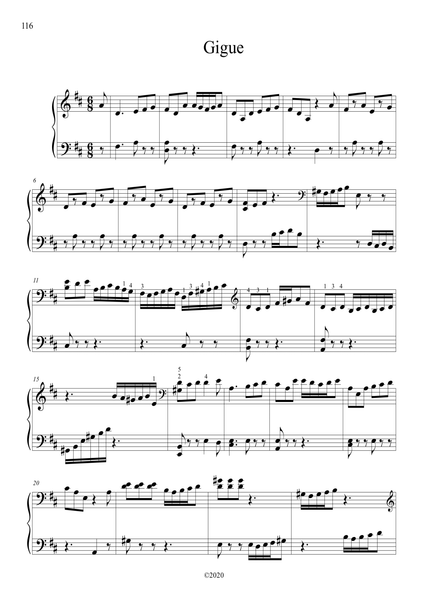J.S. Bach: Cello Suite No. 6 in D major, BWV 1012 – arranged for piano by Eleonor Bindman (GPC080)
This is the sheet music edition of a new piano arrangement of the Bach Cello Suite No. 6 in D major by Eleonor Bindman.
Solo piano
20 pages
Duration: 25:29
Audio samples
Buy, stream and download the CD here.
Since Cello Suite No. 6 was written for a five-string instrument, it has the widest range, reaching more than an octave above middle C. It is also the longest of the Suites and the most harmonically rich. Because of its increased treble range and chord density, Suite No. 6 really blossoms on the piano. In addition, the bright and sunny key we associate with Beethoven’s “Ode To Joy,” D major, adds a particularly jubilant character to this last installment of the cycle. I can’t help but wonder if Bach was thinking that writing in “D,” the first letter of Dominus Deus, would be a fitting ending mode for the set. After all, we do know that he kept the Creator in mind when he was composing.
The character of the Prelude, like in Suite No. 4, changes when transcribed for the piano: as the repeated notes naturally adapt to two hands it speeds up and plays like a toccata. Of course one needs to be careful not to start too fast because there are 16th notes at the end and they need to be clear. This is the only movement where the Anna Magdalena autograph contains stray “echo” dynamic markings which I include in the score. These dynamics are more appropriate for a cello’s more restrained tempo; at a faster speed they may seem unnecessary especially in the beginning, but that’s a matter of taste. I prefer to use the Forte/Piano echo effect for the many later iterations of the theme as well as in mm. 23-30. It’s also advisable to designate some generally soft sections when the theme is absent, like in mm. 41-53, for instance. The dotted rhythms followed by faster notes in the mm. 78-80 sequence shouldn’t be read strictly; they are just long notes followed by a “roll” to a 6th above. I use the right pedal in mm. 59, 85 and 86, just for a change in texture. Although the chords in mm. 98-99 are broken up by most cellists, I found Mstislav Rostropovich’s no-nonsense blocked-chord rendition appealing and decided to follow suit.
Learning the Allemande initially feels like an exercise in counting because of the abundance of dotted rhythms and a myriad of 32nd and 64th-note combinations. As one internalizes the flow it reveals a subtly lyrical quality and a veritable treasure of harmonic overlay. The entire Allemande is only twenty measures long but it takes between seven and eight minutes to play it. It flows well at 40 per each 8th note. A pianist cannot get away with playing much faster here, as opposed to the Prelude, since each melodic, harmonic and rhythmic nuance claims its own time. This is anything but a dance, it’s a song, a confession. A truly marvelous movement.
The Courante needs to provide a contrast between the sinuous Allemande and the equally expansive forthcoming Sarabande. It certainly delivers, presenting us with characteristic Courante features: an energetic dance feel, bouncy 8th-16th note rhythmic patterns as well as extensive runs of fast 16th notes. It needn’t be too fast so many tempos will work; I prefer 100 per quarter note.
I already referred to Brahms – a composer who often turned to earlier music for inspiration – in my description of Gavotte II from Suite 5 and I can’t help but think of him again when writing about this Sarabande. It’s evocative of a Brahms Intermezzo, feels as if it had been written for the piano and resembles the Allemande in approach: another song-like piece, with expansive phrasing, longer 3/2 measures and rich harmonies. All chords in the score have the arpeggio signs next to them since our point of reference is the cello but for the keyboard a simple block-chord rendition would also be a sound choice. A variety of tempi is possible here, as Bach truly takes a “Romantic” approach, abandoning the form in favor of content and writing with great sincerity and depth of emotion. See what feels right to you.
The Gavottes of Suite 6 are both in D major, delightful, viscerally satisfying and compelling us to move. Gavotte I is a richly harmonic catchy tune, reminiscent of many light-hearted movements from Bach’s Orchestral Suites, listening to which is useful for determining the right character here. Gavotte II, because of its hurdy- gurdy drone accompaniment and the key of D major, has a personality similar to the famous Musette from the Anna Magdalena notebook. Just like in Gavotte II of the 5th Suite, Bach inserts the four-measure theme of part 1 twice inside part 2 so a repeat of the longer one seems unnecessary. 80-90 per half note is a good tempo.
The first eight measures of the last Gigue remind me very much of celebratory horn calls, perhaps at the conclusion of a successful hunt. It’s a straightforward, uplifting movement with simultaneous layers of 8ths and 16th notes demanding a virtuosic approach with some degree of abandonment and a fairly fast tempo, maybe 90 per dotted quarter note. Even if played at a slower tempo, is has plenty of character and is an exciting way to cap off the incredible thirty-six-movement kaleidoscope of the six Cello Suites.
– Eleonor Bindman







